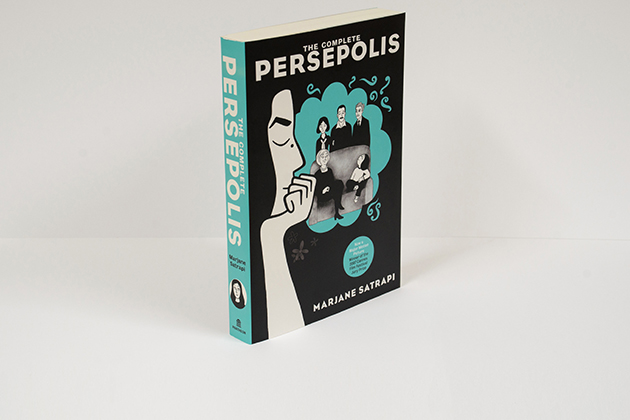Persepolis, a best-selling, autobiographical graphic novel by Marjane Satrapi, has been named the UConn Reads book selection for 2013-14, the UConn Reads Selection Committee announced today.
The committee, chaired by associate professor Anne D’Alleva, narrowed more than 150 nominations submitted by members of the University community to five finalists: Satrapi’s novel; Things Fall Apart by Chinua Achebe; We Need New Names by NoViolet Bulawayo; Heart of Darkness by Joseph Conrad; and The God of Small Things by Arundhati Roy.
The nominations for this year’s UConn Reads program were focused on world literature – defined as works of fiction written by non-U.S. authors that have gained significant worldwide readership since publication in their original language. Originally published in French, Persepolis depicts Satrapi’s coming-of-age story in her native Iran during and after the Islamic Revolution.
Although Persepolis is available in two parts as two separate graphic novels, the UConn Reads programming will draw on the edition titled The Complete Persepolis, which repackages Persepolis 1 and Persepolis 2 into a single volume. The Complete Persepolis will be made available at a discount at the UConn Co-op in the coming weeks. It is not available in eBook format.
Persepolis is the first graphic novel to have been chosen for the UConn Reads program. “In a very beautiful way, Persepolis combines text and image to deal with some very complicated experiences as Satrapi comes of age during the Islamic Revolution and the Iran-Iraq War, but also larger issues around warfare, childhood, identity, education, religion, and gender. All of these things come into play in this novel,” says D’Alleva. “She captures the personal impact of the revolution in a very moving and profound way.”
The book follows Satrapi from girlhood through young adulthood and as she moves abroad and then back to Tehran, giving readers of various ages an opportunity to relate to the book at different points in the storyline. “There are many ways in which this book will resonate with our students and with other members of our community,” D’Alleva says.
The UConn Reads Selection Committee anticipates offering a wide range of programming related to Persepolis. “There are so many ways to engage with this book across different fields,” says D’Alleva, “from political science to human rights to family studies and human development to our illustration program.”
While UConn Reads event programming will commence in the spring, with events in the works for each of the University’s regional campuses as well as for UConn alumni located in New York and Boston, members of the University community are invited to spend this fall planning events and discussion groups. In the coming weeks, the UConn Reads program will also hold a competition for a variety of small grants to help support events programming related to this year’s book selection.
Launched in 2011 by UConn President Susan Herbst, the UConn Reads program was created to bring the University community together for an annual common reading program. The inaugural book selection was Half the Sky: Turning Oppression into Opportunity for Women Worldwide (Knopf, 2009), a nonfiction bestseller by Nicholas D. Kristof and Sheryl WuDunn.
For more information on the UConn Reads program and where you can locate a copy of this year’s title, visit uconnreads.uconn.edu. To follow the UConn Reads conversation on Twitter, use the hashtag #UConnReads.





